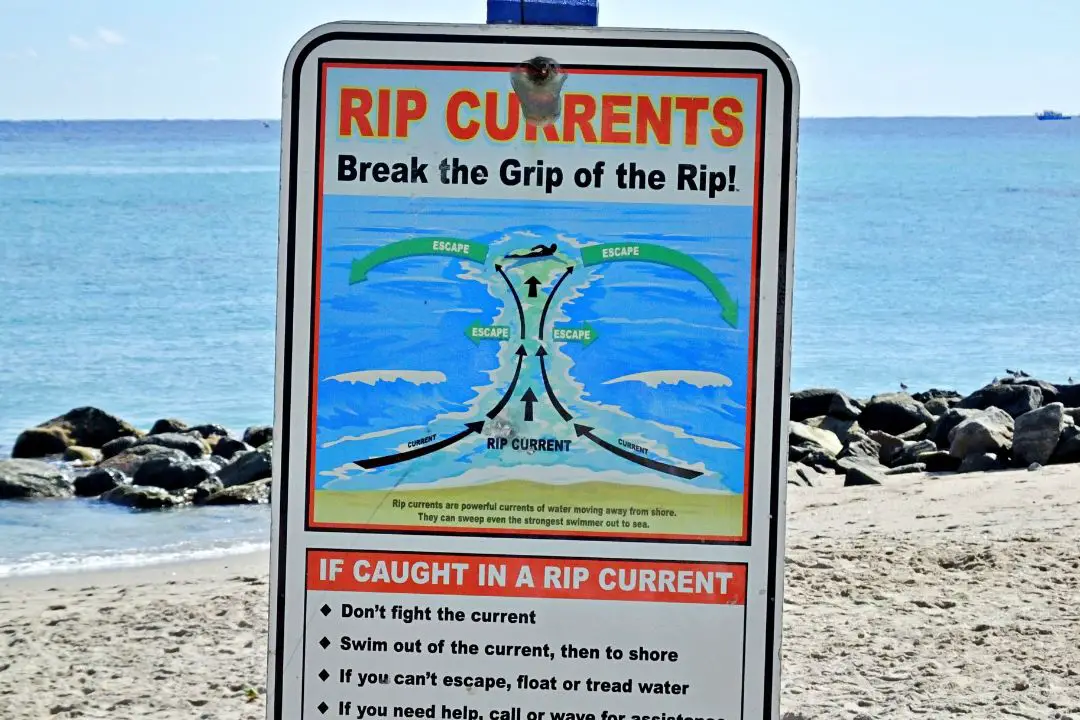Rip Current Water Safety for Kids and Families

Summer is right around the corner. For many, this means spending time at the beach, soaking up the sun, and cooling off in the water. Before you head seaside, take 3 minutes to review rip currents, the dangers they present, and survival and safety strategies for your family.
What is a rip current?
Rip currents are powerful, narrow channels of water that flow quickly away from shore. They form when excess water powerfully returns back to the sea after breaking on the shoreline, forming a current.
Rip currents are often confused with rip tides and undertows, but these are actually three different phenomena. Rip tides are a strong current that is created by tidal flow from an inlet or lagoon to the ocean. Undertows occur when the excess water from a breaking wave meeting the shore pulls you under, but does not create a current.
Rip currents are not limited to ocean beaches. While they’re typically found near piers, jetties, and sandbars, they can in fact form anywhere with breaking waves, including The Great Lakes and other large bodies of water.
Why are rip currents dangerous?
According to the United States Lifesaving Association, rip currents are responsible for an estimated 80% of beach rescues. They are powerful and fast-moving, with speeds that can reach up to 8 feet per second (that’s faster than an Olympic swimmer!). Since the beginning of 2023, there have been 26 deaths related to rip currents, with the highest concentration happening in Florida. Children accounted for 8 of those deaths.
Rip Current Safety
Identifying rip currents with your kids
Teaching your family how to identify rip currents can save their lives. Start by showing your child what to look for so they can steer clear of dangerous situations. Rip currents are often characterized by:
- A noticeable difference in water color or clarity
- A channel of churning, choppy water
- An area with a break in the pattern of incoming waves
- A line of foam, seaweed, debris moving seaward
Stay aware of rip current statements
A rip current statement is a warning issued by weather forecasters to alert beachgoers about the potential presence of rip currents. Before heading to the beach, parents and caregivers should check weather reports or contact the lifeguard station to ask. Rip current statements, official reports, and trained professionals can help you make a decision about the conditions of the beach and whether it’s safe to swim.
Helping kids escape a rip current
Getting caught in a rip current is a scary and potentially dangerous situation. But there are ways to safely navigate out of the current. Teach your family to Flip, Float, and Follow! If you are caught in a current:
- Flip on your back.
- Float in order to preserve energy and keep your head above water.
- Follow the current.
When your child feels the rip current decreasing in strength, they should swim parallel to the shore until they’re completely out of the current’s pull. From here rescuers can get to them, or those with strength can swim back to shore at an angle away from the rip current.
Remind your child that they should never try to swim directly against the current. It’s more important for them to stay calm, avoid panic, and conserve their energy. While floating on their back, they will have a safer opportunity to wave and shout to shore for help.
Rip currents can be life-threatening. Have a safety talk with your loved ones before heading to the shore this summer.
